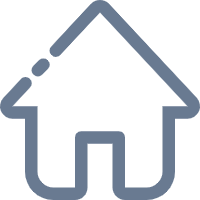When we ride, we don't always think about our brakes—until we need them. But the brake system is one of the most important parts of any motorcycle.
It's what helps us stop safely, control speed, and avoid danger. That's why we should understand how it works and how to keep it in good shape.
<h3>How Motorcycle Brakes Work</h3>
There are two main types of brakes on a motorcycle: disc brakes and drum brakes. Most modern bikes use disc brakes on both wheels, especially on the front.
Here's what happens when we squeeze the brake lever or step on the rear pedal:
<b>1. Hydraulic pressure is applied:</b> When we pull the lever, brake fluid pushes through hoses.
<b>2. Brake caliper engages: </b>That pressure moves pistons inside the caliper.
<b>3. Brake pads </b>clamp onto the metal disc (also called the rotor).
<b>4. Friction </b>slows the wheel, and we come to a stop.
The rear brake works the same way, but it's usually activated by a foot pedal. Some bikes have a combined braking system (CBS) that applies front and rear brakes together. Others use ABS (anti-lock braking system) to prevent skidding during sudden stops.
<h3>What Are the Main Brake Parts?</h3>
To keep things simple, let's break down the key parts of the system:
<b>• Brake lever/pedal: </b>Where we apply the force.
<b>• Master cylinder: </b>Converts our action into hydraulic pressure.
<b>• Brake fluid: </b>Transfers pressure through the system.
<b>• Brake lines: </b>Hoses that carry the fluid.
<b>• Calipers and pistons:</b> Push the pads against the disc.
<b>• Brake pads: </b>Create friction to stop the bike.
<b>• Brake disc (rotor): </b>The spinning part attached to the wheel.
If any of these parts fail, our braking power is reduced or lost—which can be extremely dangerous.
<h3>Signs of Brake Trouble</h3>
Let's pay attention to these early warning signs:
• A spongy brake lever or pedal
• Squeaking or grinding noises when braking
• Reduced stopping power
• Fluid leaks near the wheels or lever
• A vibration when we apply the brakes
If we notice any of these, it's time to check or replace components immediately.
<h3>Essential Brake Maintenance Tips</h3>
Good braking depends on good maintenance. Here's what we should be doing regularly:
<b>1. Check brake fluid</b>
• Make sure the level is between the "MIN" and "MAX" marks.
• The fluid should be clear—not dark or dirty.
• Replace it every 1–2 years or as recommended by the manufacturer.
<b>2. Inspect brake pads</b>
• Look through the caliper to check the pad thickness.
• If it's less than 2–3mm, it's time to change.
• Worn-out pads reduce stopping power and damage the disc.
<b>3. Clean the brake system</b>
• Use a soft brush to remove dust and debris around the calipers.
• Avoid using oil-based cleaners—only use brake cleaner spray.
<b>4. Monitor disc condition</b>
• Check for scratches, rust, or grooves on the rotor.
• A damaged disc should be replaced to avoid unsafe braking.
<b>5. Test brake feel</b>
• Squeeze the brake lever before every ride.
• It should feel firm and responsive—not soft or slow.
<h3>When to Visit a Mechanic</h3>
Some maintenance tasks—like replacing brake lines or rebuilding calipers—are better left to professionals. If we're unsure or uncomfortable, it's always safer to get help from a qualified mechanic.
Also, during any major service or tire change, ask them to double-check the braking system. It's a small step that brings huge peace of mind.
<h3>Let's Wrap It Up</h3>
Motorcycle brakes are more than just a pedal and a lever. They're a system of parts working together to keep us safe. By learning how they work and keeping them well-maintained, we give ourselves the best chance of reacting quickly and staying in control on every ride.
So Lykkers, have you ever had a brake issue while riding? Or do you already have a regular maintenance routine? Let's swap tips and stories—we'd love to hear what you've learned along your journey!





